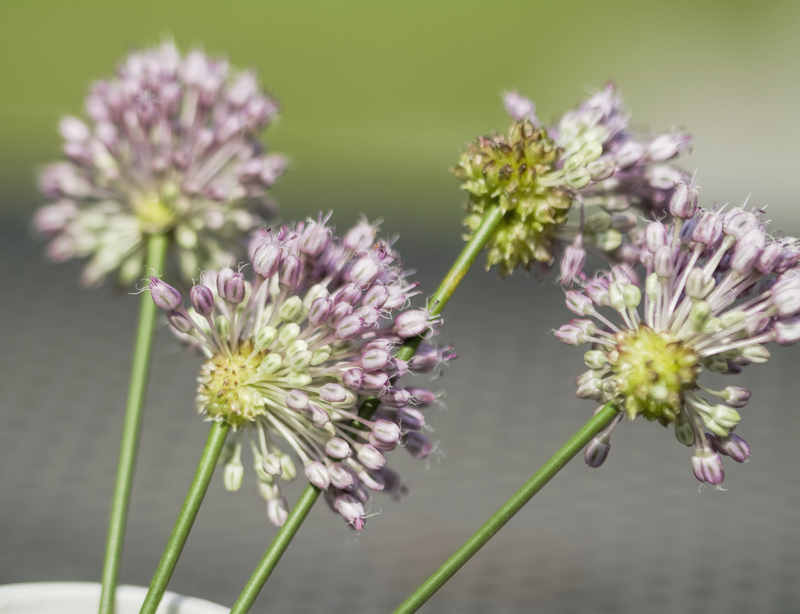From home gardens to global impact: Fighting climate change with greenery
Posted on 14/08/2025
From Home Gardens to Global Impact: Fighting Climate Change with Greenery
Climate change is one of the gravest threats facing humanity. With rising global temperatures, extreme weather events, and ecosystem disruptions, it's clear that urgent action is necessary. While international agreements and government-led initiatives often grab headlines, the battle against climate change also begins at home, in every backyard and on every balcony. From planting a single tree to spearheading citywide green projects, individuals and communities can create a substantial positive impact. This article explores how home gardens and other green initiatives contribute to carbon sequestration, biodiversity, and climate resilience, and explains strategies for scaling local actions into global solutions.

The Environmental Value of Greenery
Greenery--which includes home gardens, community parks, urban forests, rooftop gardens, and large-scale rewilding projects--plays a critical role in maintaining environmental health. Through a blend of science and easy-to-implement practices, greenery can combat climate change and foster a sustainable future for all.
How Plants Fight Climate Change
- Carbon Sequestration: All plants absorb carbon dioxide (CO2) during photosynthesis. Trees and perennial plants, in particular, trap carbon for decades, acting as vital carbon sinks.
- Regulating Local Climate: Urban greenery provides shade, reduces heat islands, and cools cities, reducing the need for energy-intensive air conditioning.
- Water Regulation: Plants help absorb rainwater, reducing runoff, preventing soil erosion, and filtering pollutants before they reach waterways.
- Biodiversity: Gardens and green spaces provide habitat for bees, butterflies, birds, and other wildlife, supporting healthy ecosystems.
- Air Quality Improvement: Many plants filter toxins, dust, and pollutants, making the air crisper and healthier for humans and wildlife alike.
Why Home Gardens Are a Powerful Starting Point
It might seem modest, but the impact of home gardens on sustainability and climate action is profound. Each backyard, patio or windowsill plot is a front line in the fight against climate change.
Benefits of Home Gardening for the Climate
- Local Carbon Fixers: Even a small number of plants can capture meaningful amounts of CO2 over their lifetime.
- Urban Cooling: Gardens on rooftops or balconies help offset the urban heat island effect, crucial as cities grow denser and hotter.
- Food Security: Edible gardens reduce the need for long-distance food transport, lowering your carbon "foodprint."
- Composting: Turning kitchen scraps into compost reduces methane in landfills and boosts soil health--better soil retains more carbon!
- Community Inspiration: Visible, thriving gardens encourage neighbors and communities to join the green movement, multiplying the effect.
Creating a Climate-Resilient Green Home Space
Ready to turn your green thumb into climate action? Here are *steps and principles* for creating a climate-smart garden that promotes sustainability and environmental balance.
1. Choose Native and Climate-Resilient Plants
- Native plants are adapted to local conditions, require less water, and resist local pests, making them eco-friendly and low maintenance.
- Select drought-tolerant or flood-tolerant species suitable for your region's changing climate patterns.
2. Prioritize Biodiversity
- Plant a variety of species--trees, shrubs, flowers, and ground cover--to support a thriving web of life.
- Include plants that attract pollinators and beneficial insects to ensure a resilient ecosystem.
3. Implement Water-Smart Techniques
- Mulching: Reduces water loss, suppresses weeds, and improves soil structure.
- Rainwater Harvesting: Collect and use rainwater for irrigation instead of overtaxing municipal supplies.
- Drip Irrigation: Delivers water directly to plant roots, minimizing waste and evaporation.
4. Build Healthy, Carbon-Rich Soil
- Regularly add organic compost, which sequesters carbon and boosts soil fertility.
- Limit chemical fertilizers and pesticides, opting for natural pest control and nutrient sources.
- Practice no-till or low-till gardening to protect soil carbon stores.
5. Grow Your Own Food
- Start with easy edibles like herbs, salad greens, tomatoes, and peppers.
- Swap seeds with neighbors to diversify gardens and foster local resilience networks.
- Every homegrown vegetable means less reliance on carbon-intensive food supply chains.
Scaling Up Greenery: From Individual to Collective Impact
Combating climate change with greenery transcends the individual. *When communities join forces*, the scale of impact multiplies. Here's how local action can create a ripple effect for global change:
Urban Community Gardens and Green Corridors
- Vacant lots can be transformed into shared green spaces that feed families, support pollinators, and green the streetscape.
- Schools, workplaces, and local governments can organize planting initiatives, tree drives, or neighborhood permaculture projects.
- Green corridors connect fragmented patches of habitat, supporting wildlife migration even in concrete jungles.
Advocacy and Education
- Community gardens serve as living classrooms, teaching sustainability, nutrition, and climate science.
- Visible green projects encourage policy makers to adopt wider urban greening and climate adaptation policies.
- Social media amplifies success stories, inspiring other cities and regions to follow suit.
Participating in Larger Restoration Initiatives
- Support or volunteer for organizations involved in reforestation, wetland restoration, or mangrove planting--ecosystems that sequester vast amounts of carbon.
- Engage with citizen science projects that monitor urban green space health and biodiversity.
Greenery's Role in Planetary Health: Expanding the Impact
While home gardens make a difference on a human scale, vast green infrastructure projects are crucial for widespread climate resilience and mitigation. From reforesting rainforests to rehabilitating degraded farmland, these efforts turn the tide on climate change.
Major International Green Initiatives
- The Bonn Challenge: Aiming to restore 350 million hectares of degraded land by 2030. Every hectare restored stores more carbon and revives habitat.
- The Trillion Trees Campaign: Seeks to plant and protect one trillion trees worldwide, providing enormous carbon sequestration and biodiversity benefits.
- Regenerative Agriculture: Techniques such as cover cropping, rotational grazing, and silvopasture improve soil carbon, reduce greenhouse gas emissions, and boost farmer livelihoods.
The Synergy Between Local and Global Efforts
The magic happens when *small-scale home and community gardens* align with broader policies and nature-based solutions. For example:
- Local planting can contribute to habitat corridors, linking up with regional conservation areas.
- Individual food gardens, on a large scale, can lessen pressure on industrial agriculture, opening possibilities for wild reforestation projects.
- Cities filled with rooftop gardens, green walls, and pocket parks set an example and spark innovation across continents.
Overcoming Barriers to Greener Futures
To truly fight climate change with greenery, we must also address common challenges:
Limited Space and Urban Density
- Innovative vertical gardens, green roofs, and hydroponics enable even apartment dwellers to participate in urban greening.
- Community "adopt-a-plot" or shared allotment gardens can distribute space across neighborhoods.
Lack of Funds or Resources
- Many cities and nonprofits run free tree giveaways, seed libraries, or offer subsidized gardening kits.
- Pooling resources among neighbors makes larger, more impactful projects possible.
Education and Awareness
- Accessible workshops, online videos, and school programs demystify sustainable gardening.
- Demonstration gardens in public spaces provide hands-on learning opportunities for all ages.
How to Start Your Journey: Practical Steps for Immediate Impact
Ready to transform your living space into a climate-positive powerhouse? Here's a practical checklist to get you growing:
- Assess your space: Balcony, backyard, rooftop, or even a sunny window--all can house greenery.
- Start small: Try a window box of herbs or a container tomato plant.
- Add native plants: Shop at local nurseries or join native plant swaps.
- Start composting: Use food waste to enrich your soil and keep carbon local.
- Connect with community: Join local gardening or environmental groups to share tools, tips, and motivation.
- Inspire others: Document and share your progress on social media to inspire friends and neighbors.

Cultivating Hope: The Road to a Climate-Positive World
In a world facing the escalating impacts of climate change, every green action counts. From flowerbeds in city apartments to sprawling community gardens and vast reforested landscapes, fighting climate change with greenery blends science and hope. Every seed sown is a step towards a greener, more resilient planet.
Home gardens may appear humble, but collectively, they lay the foundation for regional, national, and global climate solutions. By nurturing plants, healthy soils, and biodiversity in our daily lives, we not only reduce carbon in the atmosphere, but also cultivate community, health, and environmental justice.
*So, whether you're a seasoned gardener or just starting, remember that your contribution matters.* Together, through greenery, we can turn the tide on climate change--one garden, one tree, one community at a time.
Frequently Asked Questions: Climate Change and Greenery
How do home gardens help fight climate change?
Home gardens absorb carbon dioxide, support biodiversity, regulate local microclimates, and reduce the urban heat island effect. They also promote composting, which keeps organic waste out of landfills and maintains carbon-rich soil.
What are the best plants for combating climate change?
Native species are ideal as they are adapted to local environments, require less maintenance, and support local wildlife. Trees, perennials, and deep-rooted plants store more carbon than annuals.
Can urban green spaces really make a difference globally?
Absolutely! As cities house more people, urban greenery can dramatically lower emissions and promote climate resilience. When scaled and linked to broader efforts, they contribute significantly to global climate goals.
How can I get involved in larger green projects?
Start by joining local environmental and gardening groups, participate in tree-planting drives, and volunteer for conservation organizations. Social media and community boards often list upcoming initiatives.
For more information on fighting climate change with greenery, explore resources from environmental NGOs, local extension services, and global campaigns like the United Nations Decade on Ecosystem Restoration.

